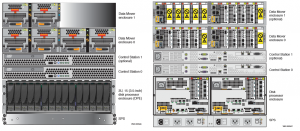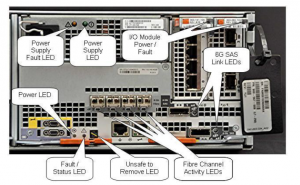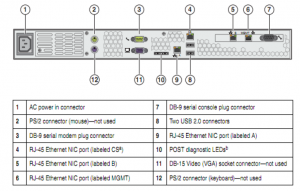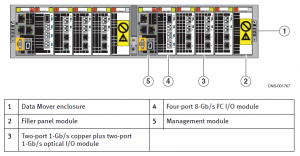The VNX series is the family of midrange-to-enterprise products. It unifies file-based and block-based offering into a single product.
In this post I would like to describe hardware components a little bit more.
Lets take VNX5500 as an example:
Disk-processor enclosure (DPE)
The enclosure is 3U in size and houses each storage processor and the first tray of disk. It can be found on the figure above with 25 (2.5 inch) disks. Let’s take a look at rear view:
Storage processors (SPs)
SP support block data with UltraFles I/O technology – supporting Fibre Channel, iSCSI and FCoE protocols. Storage Processors provide access for all external hosts and the file side of the VNX array.
On above example SPs are located in Disk Processor Enclosure (DPE).
Storage processor enclosure (SPE)
The enclosure is 2U in size and houses each storage processor. It can be found in VNX5700 and VNX7500 models, support maximum of 500 (VNX5700) and 1,000 drives (VNX7500)
Control Station
Control Station are 1U in size and provide management functions to the file-side components (referred to as Blades or Data Movers). The CS is responsible for Blade failover. To provide HA Control Station might be configured with a matching secondary CS.
Data Mover
Data Mover (or Blade) access data from the back-end and provide host access using the same UltraFlex I/o technology that supports NFS, CIFS, pNFS protocols. The Data Movers in each array are scalable and provide redundancy.
Data Mover Enclosure (DME)
The DME is 2U in size and houses the Data Movers (Blades). The DME is similar in front to SPE and is used on all VNX models that support file.




